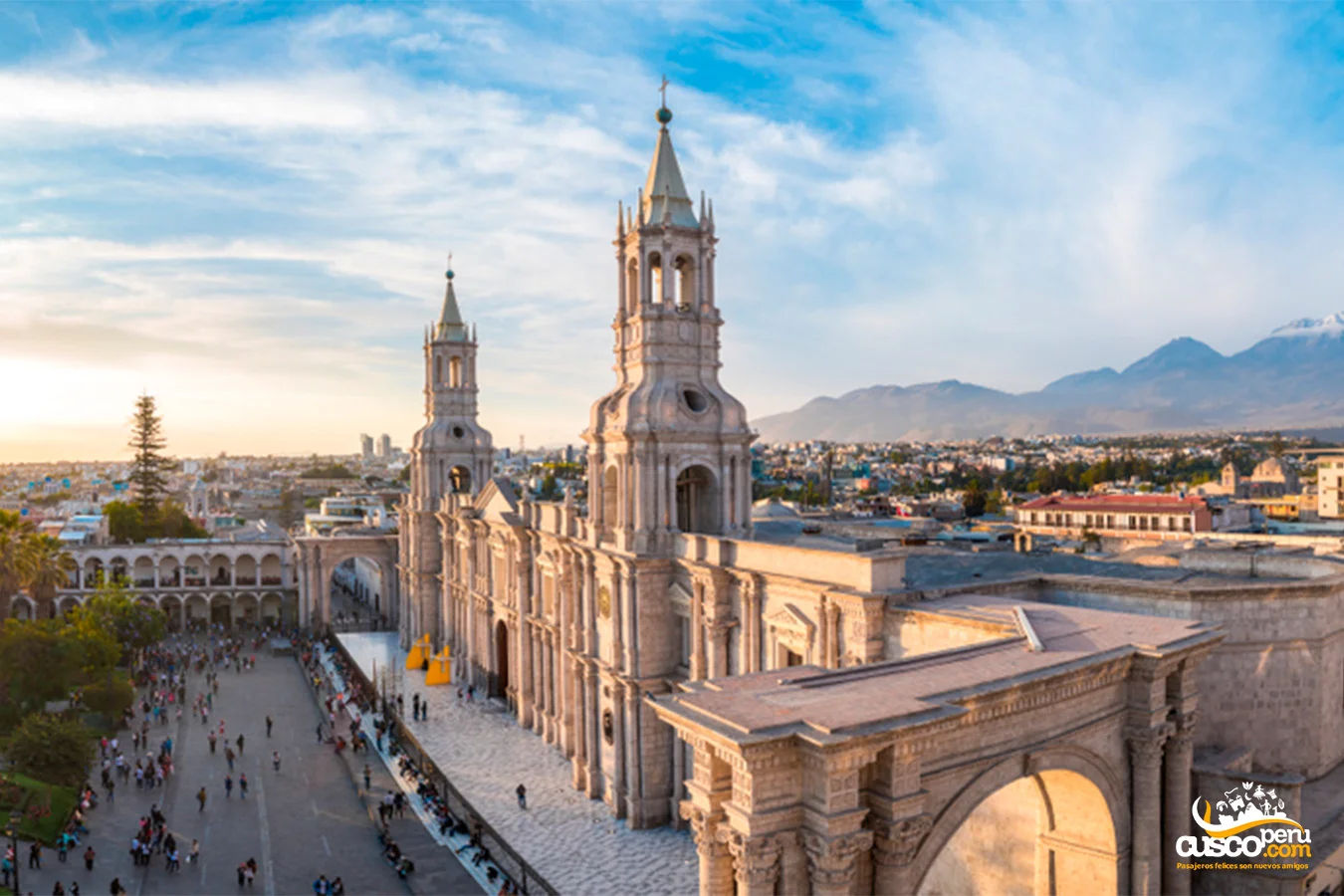Its construction began in 1540, the same year that the city of Arequipa was founded. It was built in ashlar (stone of volcanic origin) and brick vaults, reflecting an eclectic style that includes neoclassical, neo-renaissance and gothic styles.
Throughout its history it was destroyed by fires, earthquakes and volcanic explosions. It has been restored after each destruction, the last of these in 2001.

Located on the north side of the Plaza de Armas.
On the façade there are two bronze medallions symbolizing the Peruvian-Bolivian confederation.
It has three large portals and inside it houses a high altar of marble carrara Italy made by Felippo Moratilla; The pulpit carved in wood work of the French master Rigot.
The museum has a room called Treasures of the Cathedral, where visitors can admire a collection of monstrances, crowns and other liturgical objects of high artistic quality and goldsmithing technique.
The room of Ornaments, Cloths and other religious objects shows ecclesiastical vestments, some of which are no longer used in current liturgies.
In the room of Religious Paintings of the Republic five works of the painter Francisco Laso tacneño are exhibited, this environment is complemented with informative panels that relate the history of the art of painting in Peru in the viceroyalty and republican time.
The museum is open from Monday to

Happy passengers